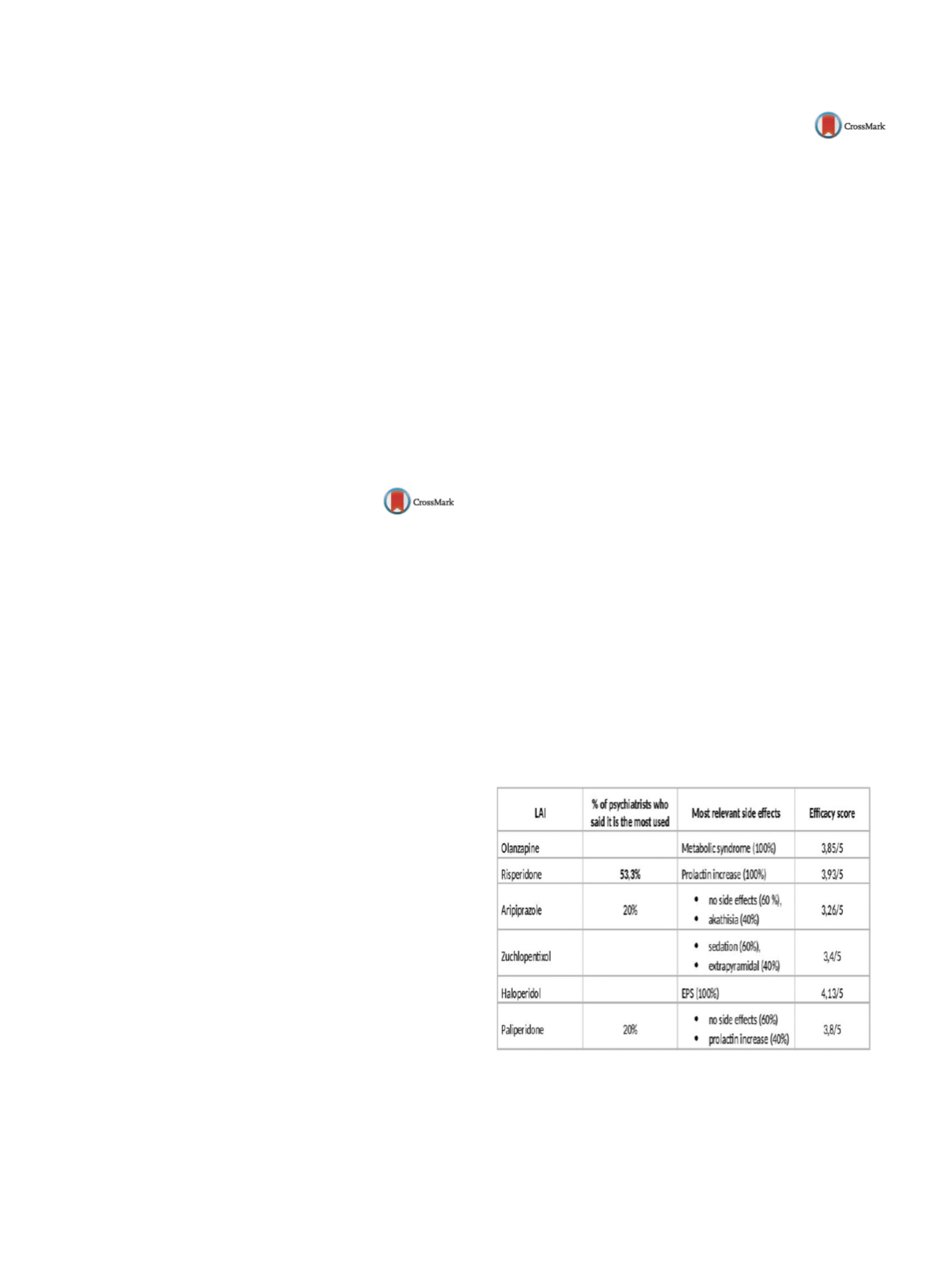

S762
25th European Congress of Psychiatry / European Psychiatry 41S (2017) S710–S771
included. All study data were extracted from the patients’ med-
ical files of the psychiatric dispensary in the prison Dob. DDIs
were determined by different interaction classes with Lexicomp
Online
TM
19.0 version and only X (major interactions and should
be avoided) and D (minor interactions and avoid if it is possible)
were included.
Results
Together 220 patients were included. Number of patients
with at least 1 interaction, were 139 (63.2%). Number of patients
with at least 1 X interaction, were 59 (26.8%). Number of patients
with more than one (1) X interactions was 15 (6.8%). More than
half of the patients (56.4%) were treated by hypnotics and 38.4%
with benzodiazepines. The most frequent X DDIs were: buprenor-
phine, methadone and sulpride with antipsychotics (clozapine and
quetiapine) and antidepressants (e.g. escitalopram, fluoxetine).
Conclusions
In patients treated with methadone and buprenor-
phine there are frequent DDIs resulting in contraindications for
prescribed combination of drugs. If an antidepressant is to be used
in patients prescribed methadone and buprenorphine, sertraline is
recommended.
Disclosure of interest
The authors have not supplied their decla-
ration of competing interest.
http://dx.doi.org/10.1016/j.eurpsy.2017.01.1430EV1101
Changes in the trend of
anti-psychotics prescription in elderly
patients in a general hospital in
Singapore 2005–2013
L. Tan
∗
, R. Kinson
Tan Tock Seng Hospital, Psychological Medicine, Singapore
∗
Corresponding author.
Objectives
This was a descriptive study of the prescription trend
of anti-psychotics for elderly patients in a general hospital in Sin-
gapore.
Methods
Elderly patients aged >65 who received at least 1 pre-
scription of anti-psychotics during 2005, 2007, 2009, 2011 and
2013 in Tan Tock Seng Hospital, Singapore, were selected. Data was
obtained from the hospital computerized prescription records.
Results
The total number of elderly patients who received anti-
psychotics increased from 865 in 2005 to 1990 in 2013. Following
the official warning issued by the health sciences authority in
2004 regarding the increased risks of cerebrovascular events in
elderly patients taking olanzapine and risperidone, prescriptions
for risperidone reduced between 2005 to 2013 (20.74% vs. 11.79%,
95% CI: 0.07–0.10,
P
< 0.0001). However, the percentage of pre-
scriptions of other atypical anti-psychotics such as quetiapine
increased from 27.47% to 58.48% (95% CI: 0.29–0.33,
P
< 0.0001),
in 2005 and 2013 respectively, and prescriptions for olanzapine
remained relatively stable at 6.65% in 2005 and 8.94% in 2013
(
P
> 0.05). With the black box warnings extended to typical anti-
psychotics 3 years later, the percentage of prescriptions of typical
anti-psychotics decreased between 2005 to 2013, e.g. haloperidol
(33.19% vs. 13.39%, 95% CI: 0.17–0.22;
P
< 0.0001), sulpiride (6.58%
vs. 2.83%, 95% CI: 0.03–0.05,
P
< 0.0001) and chlorpromazine (3.85%
vs. 1.85%, 95% CI: 0.01–0.03,
P
< 0.0001).
Conclusions
After the first safety warning the percentage of pre-
scriptions for risperidone dropped significantly, and there was a
significant increase for quetiapine. The percentage of haloperi-
dol, sulpiride and chlorpromazine prescriptions declined after both
warnings. Anti-psychotics use in the elderly continues to be preva-
lent.
Disclosure of interest
The authors have not supplied their decla-
ration of competing interest.
http://dx.doi.org/10.1016/j.eurpsy.2017.01.1431EV1102
Psychiatrists’ opinions on long-acting
anti-psychotics drugs: Perceived
differences and identification of the
ideal patient for each of these
medications
V. Verdino
∗
, A. Fagiolini
Azienda Ospedaliera Universitaria Senese, Molecular Medicine and
Development, Psychiatry Section, Siena, Italy
∗
Corresponding author.
Introduction
Long-acting anti-psychotic drugs (LAI) are increas-
ingly used in clinical practice, owing to their ability to improve
adherence.
Objectives and aims
To understand the variables that inform
treatment choice, within the LAI anti-psychotics, in the daily clini-
cal practice.
Methods
Fifteen attending psychiatrists from the university
clinic of Siena and the communitymental health service USL 7 Siena
and Val d’Elsa were asked to answer a questionnaire comprising 4
questions, and asking for their clinical experience regarding olan-
zapine, risperidone, haloperidol, zuchlopentixol, paliperidone and
aripiprazole LAISs.
In particular, they were asked to indicate:
– which LAI has been their mostly used;
– what have been the most relevant side effects;
– an efficacy score ranging from 0 to 5;
– who the ideal patient for each of these medications could be.
The answers were statistically assessed and the final results
described as a percentage of the total.
Results
The results are shown by the
Tables 1 and 2 .Conclusions
LAI are still heterogeneously used in the daily clini-
cal practice: their actual use depends on the individual experience
with a specific drug as well as on their costs and the availability of
resources within the medical service. The most used LAI resulted
to be risperidone, although haloperidol LAI is still considered to
be the most effective one. Those psychiatrists interviewed had an
overall good opinion about themost recent LAI such as paliperidone
and aripiprazole. This is due to their good tolerability, which allows
them to be administered more safely to the youngest, in order to
preserve their good functioning.
Table 1


















